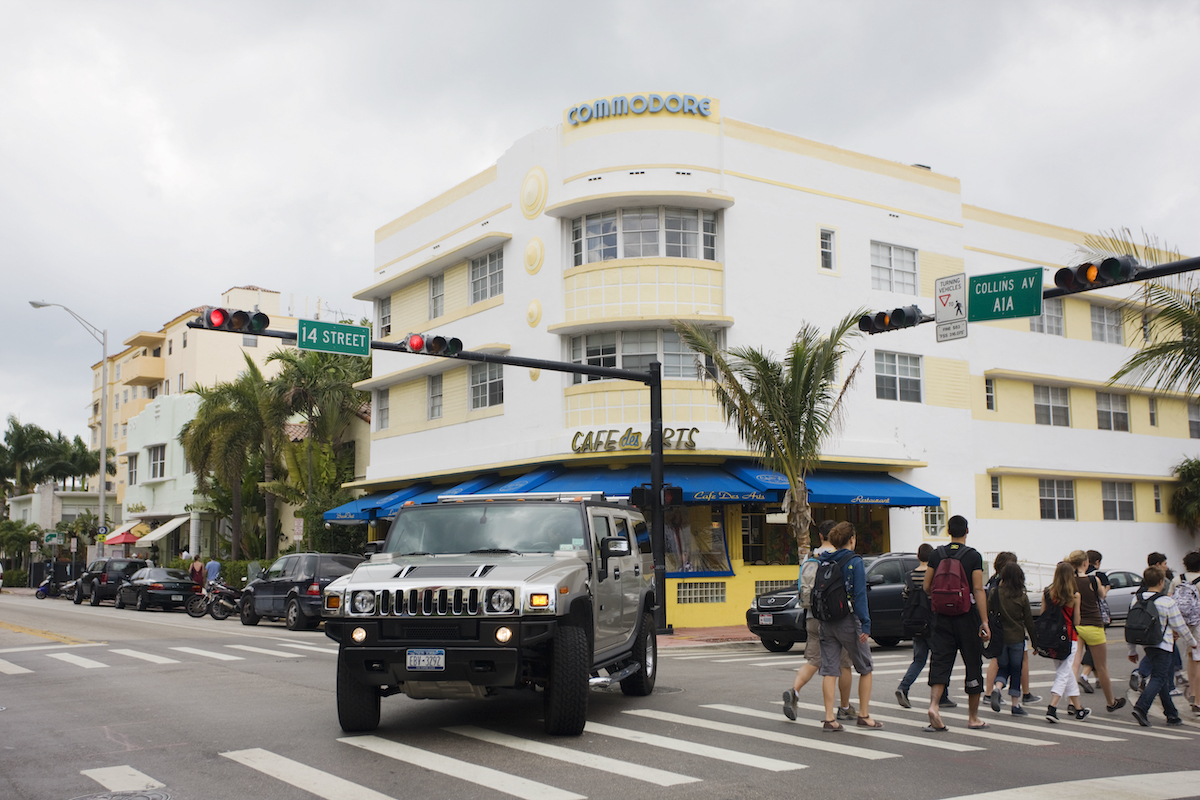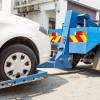
SUVs and Trucks Are Likelier to Hit and Kill Pedestrians When Turning, IIHS Says
As new vehicles improve rider experiences with updated tech and safer equipment, car safety remains a crucial topic. But what about the risks to pedestrians? It’s a question that inspired an IIHS study. The data suggests trucks and SUVs are likelier to hit and kill pedestrians when turning. Here’s more about the IIHS study and other dangers of navigating these large vehicles.
SUVs and pickups have come a long way in safety

It used to be that pickup trucks and SUVs didn’t perform well in safety, especially when it came to crash tests. But a lot has changed, including safety features and driver technology. Today’s SUVs and pickups are incredibly safe for occupants. In fact, many continue to earn Insurance Institute for Highway Safety (IIHS) awards.
Just this year alone, the number of small, midsize, and even large SUVs earning IIHS distinctions is massive. Some of the 2022 award winners include crossover favorites such as the Kia Seltos, Lexus UX, and Nissan Rogue. The 2022 Ford Explorer earned an IIHS Top Safety Pick+ award, as did the Hyundai Santa Fe, Toyota Highlander, and Subaru Ascent. And three Audi SUVs — the e-tron, e-tron Sportback, and Q8 — made the IIHS list of award winners.
Pickup trucks, too, are earning IIHS safety nods. Just scrolling through the 2022 roster, you’ll see models such as the Ford F-150 Crew Cab, Ram 1500 Crew Cab, and Ford F-150 Extended Cab. Even the new Hyundai Santa Cruz Crew Cab is an IIHS Top Safety Pick.
But a recent IIHS study shows turning SUVs and trucks are hazards for pedestrians
When the IIHS investigated instances of pedestrian accidents, it was already understood that larger vehicles present more risks of damage and injury based on size alone. According to the IIHS’ official findings and one of the study’s authors, vice president of research Jessica Cicchino, “We already know that large vehicles cause more severe injuries” regarding pedestrian-related crashes.
Pedestrian deaths in vehicle crashes have increased almost every year since 2009. There were 6,500 fatalities recorded in 2020, while another 54,700 pedestrian injuries were reported. One of the most significant and evident factors in this constant rise might be because every model year sees increasingly larger vehicles.
Researchers examined turning scenarios with larger vehicles such as pickups and SUVs. During those turns, usually based on the size of the vehicle in testing and the position of the A-pillars, visibility is the most significant concern, Consumer Reports shares. And when comparing instances recorded in recent years, researchers found that trucks and SUVs were 51% and 25% likelier than cars to kill a pedestrian in the road versus a head-on crash with a crossing individual.
Consumer Reports outlines ‘hidden dangers’
Though automakers have improved safety features in SUVs and pickups, their growing size continues to be a concern. In addition to the IIHS study, Consumer Reports conducted an analysis of industry data measuring the hood height of passenger trucks. Most have grown taller by 24% since 2000. And some heavy-duty models, such as the Ford F-250, stand a whopping 55 inches off the ground. That translates to terrible visibility of anyone or anything immediately around the truck.
Additional CR data based on newer models continues to be alarming with regard to visibility. Drivers have “poorer front sight lines” that contribute to an increased blind spot directly in front of the pickup.
“These trends are alarming,” CR’s manager of safety policy, William Wallace, says. He calls for car companies to make improvements to these larger vehicles to help protect people outside these vehicles, not just inside them.
These latest IIHS and CR studies prove that despite making major milestones in car safety, SUVs and trucks can still be more dangerous than cars. And it’s a reminder to double-check your surroundings to avoid pedestrian collisions.


